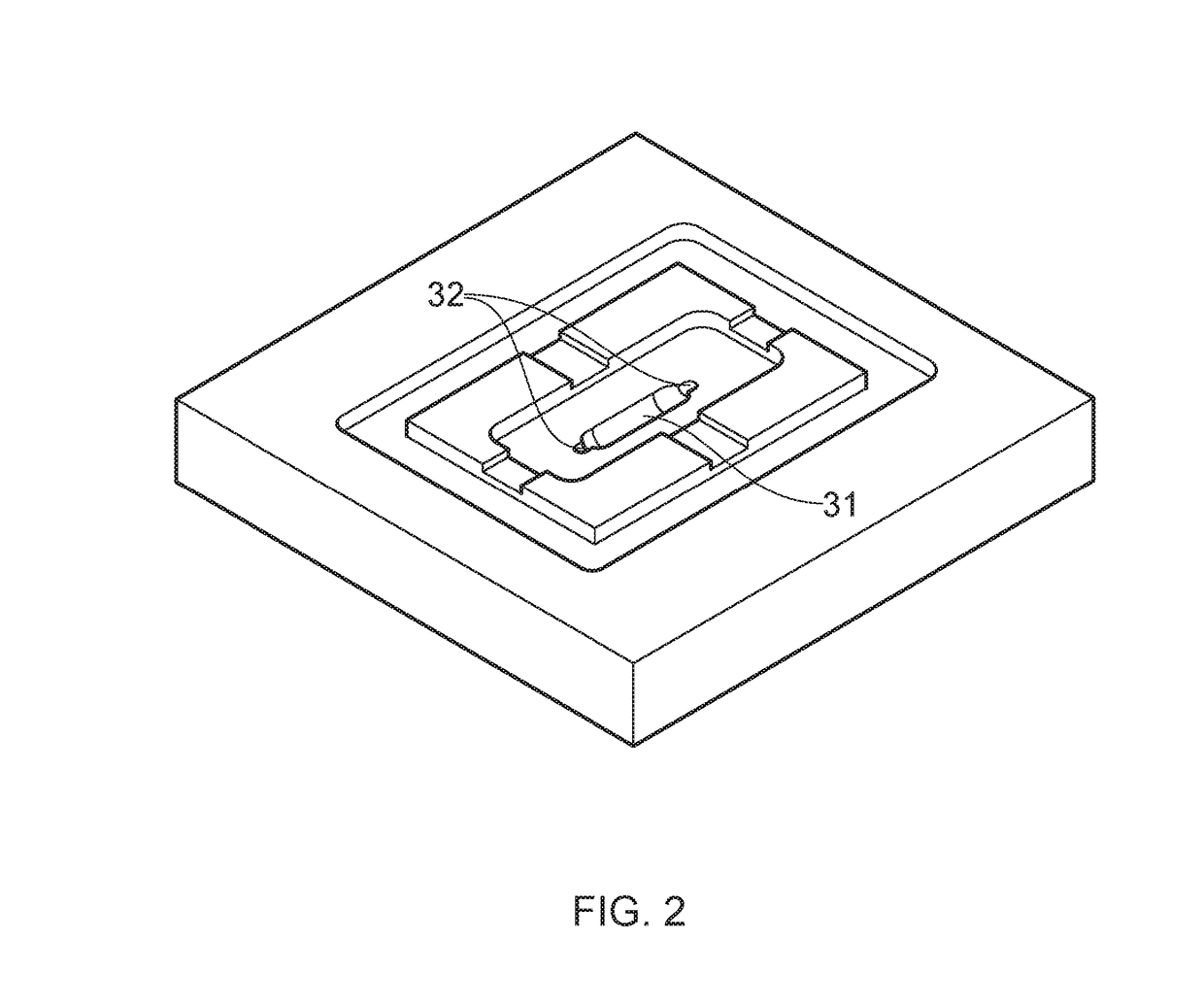Monolithic body
a monolithic body and monolithic technology, applied in the field of monolithic bodies, can solve the problems of difficult preparation of silica-based monoliths, difficult work, and chromatographic systems that suffer from leaking or blockage problems, and achieve the effect of enhancing adhesion and enhancing hermetic seal
- Summary
- Abstract
- Description
- Claims
- Application Information
AI Technical Summary
Benefits of technology
Problems solved by technology
Method used
Image
Examples
example 1
on of Monolithic Body
[0177]A mould was designed using SolidWorks software which was also used to program the CNC machine. The CNC machine was then used to mill the mould out of PTFE.
[0178]0.282 g polyethylene oxide (PEO) was added to a 50 mL falcon tube and cooled with ice. 2.58 mL nitric acid (1 N) was added and the mixture stirred. 0.29 mL water was then added and the mixture left for 1 hour maintaining cooling. After 1 hour, 2.26 mL tetraethyl orthosilicate (TEOS) was added and stirring and cooling continued.
[0179]The PTFE mould (see, for example, as illustrated in FIG. 3) in two halves was put together in a holder and heated at 40° C. for 1 hour, after which the holder was tightened to ensure no leakage. After 1 hour of stirring, the PEO / TEOS mixture was injected into the mould ensuring the mould was filled and all air escaped. A clamp with a parafilm layer was placed against the mould inlets and tightened to seal the mould, and the whole apparatus heated to 40° C. for 72 hours....
example 2
lization of Monolithic Body
[0184]2.a. Preparation of Cation-Exchange Monolithic Body
[0185]The desired amount of 3-mercaptopropyltrimethoxysilane is added to a solution containing 10 mL ethanol and 10 mL water, followed by the addition of a silica monolith. The mixture is refluxed overnight. The monolith comprising thiol surface groups is recovered and washed with water to remove unreacted reagents. The obtained silica monolith is oxidized by reaction with 10 mL hydrogen peroxide (30%) in 10 mL water and 10 mL methanol overnight at 60° C. The monolith is recovered and washed with water, and treated with 10 mL of 1 M H2SO4. The sulfonic acid modified monolith is washed with water and dried at 60° C. overnight.
[0186]This cation-exchange monolith shows a CEC (cation exchange capacity) of 181 μeq / g.
2.b. Preparation of Anion-Exchange Monolithic Body
[0187]The desired amount of silica monolith is added to anhydrous toluene. To this is added a solution containing 0.12 mL methyltrichlorosilan...
example 3
of Silicon Nitride, Silicon Imido Nitride and Silicon Silicon Imide Monolithic Bodies
[0190]Details for the preparation of certain silicon nitride materials can be found in WO 2006 / 046012 which describes a sol-gel procedure for the preparation of materials based on silicon nitride and silicon oxynitride. Monolithic bodies comprising silicon imido nitride, silicon imide and / or silicon nitride and processes for their preparation are disclosed in WO 2013 / 054129. Monolithic bodies comprising silicon imido nitride, silicon imide and / or silicon nitride as described herein can be prepared according to the preparation procedures described in WO 2006 / 046012 and WO 2013 / 054129.
[0191]Silicon diimide mesoporous gel is optionally partially pyrolysed to form a silicon imido nitride, or completely pyrolysed to form a silicon nitride ceramic material.
PUM
| Property | Measurement | Unit |
|---|---|---|
| Capacitance | aaaaa | aaaaa |
Abstract
Description
Claims
Application Information
 Login to View More
Login to View More - R&D
- Intellectual Property
- Life Sciences
- Materials
- Tech Scout
- Unparalleled Data Quality
- Higher Quality Content
- 60% Fewer Hallucinations
Browse by: Latest US Patents, China's latest patents, Technical Efficacy Thesaurus, Application Domain, Technology Topic, Popular Technical Reports.
© 2025 PatSnap. All rights reserved.Legal|Privacy policy|Modern Slavery Act Transparency Statement|Sitemap|About US| Contact US: help@patsnap.com



